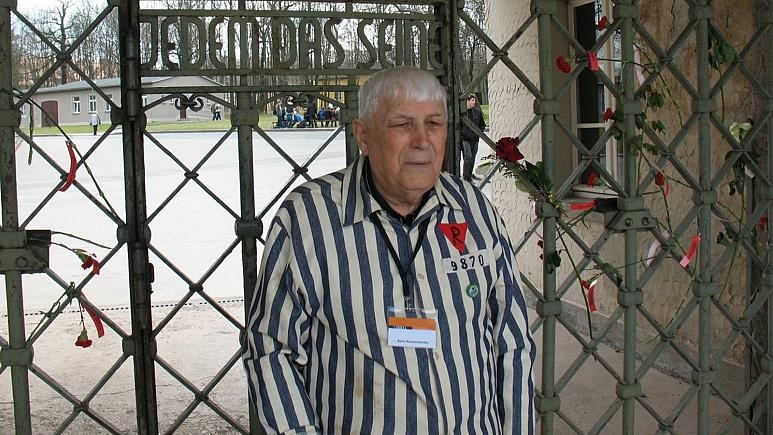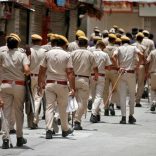Apple plays it safe on AI despite Wall Street pressure
Ukraine war: Man, 96, survived four Nazi death camps but was killed by a Russian missile

Former Buchenwald prisoner Boris Romanchenko [Photo:: Buchenwald and Mittelbau-Dora Foundation via Twitter]
He survived being interred at not one, but four World War II Nazi death camps.
The 96-year-old Boris Romanchenko — who lived through the horrors of the likes of Dora-Mittelbau and Bergen-Belsen — was killed by a Russian missile strike on his flat in the war-ravaged Ukrainian city of Kharkiv on Friday.
The news of his death was confirmed by the Buchenwald concentration camp memorial foundation on Monday after his granddaughter Yulia called the institution.
“It is with horror that we report the violent death of Boris Romanchenko in the war in Ukraine,” the memorial for the Buchenwald survivors said in a statement.
“The multi-storey apartment building where Romanchenko lived was shelled and caught on fire,” said the statement.
Yulia Romanschenko told the local outlet Suspilne Novini that the apartment was directly struck by a missile, leaving only the metal mesh of the bed where he slept intact.
“He lived in that apartment in [the neighbourhood of] Slativka for 30 years,” she said. “He couldn’t walk or hear well, but he didn’t want to leave.”
A spokesperson for the Anne Frank Museum told Euronews the institution was deeply sorry to hear of Romanchenko’s death.
“It’s very tragic that he again had to experience war and that he lost his life in a Russian strike on his home,” the statement said.
The museum dedicated to commemorating Frank, a Bergen-Belsen prisoner and one of the most widely-known Holocaust victims, also expressed their condolences to Romanchenko’s relatives.
“We wish them — as we wish all the people in Ukraine — much strength during this terrible war and anxious times.”
Kharkiv, Ukraine’s second-largest city, has been under heavy fire from Russian artillery throughout the invasion, which Russian President Vladimir Putin calls a “special operation” necessary to disarm and “denazify” its neighbour.
Romanchenko was born on 20 January 1926, in Bondari, near the city of Sumy, some 185 kilometres from Kharkiv.
After Germany invaded the Soviet Union in 1941, Romanchenko was taken to Dortmund as a forced mining labourer in 1942 and was sent to the concentration camps after an escape attempt in 1943.
He was first sent to Buchenwald, where more than 53,000 people were killed during World War II.
From there, he was transferred to Peenemünde on the Baltic Sea island of Usedom, where he worked as a forced labourer on the V2 rocket programme.
За словами внучки, він жив у багатоповерховому будинку, в який влучив снаряд. Борис Романченко інтенсивно працював над пам’яттю нацистських злочинів і був віце-президентом Міжнародного комітету Бухенвальда-Дори.
— Stift. Gedenkstätten Buchenwald und Mittelbau-Dora (@Buchenwald_Dora) March 21, 2022













Leave a Reply
Be the First to Comment!
You must be logged in to post a comment.
You must be logged in to post a comment.